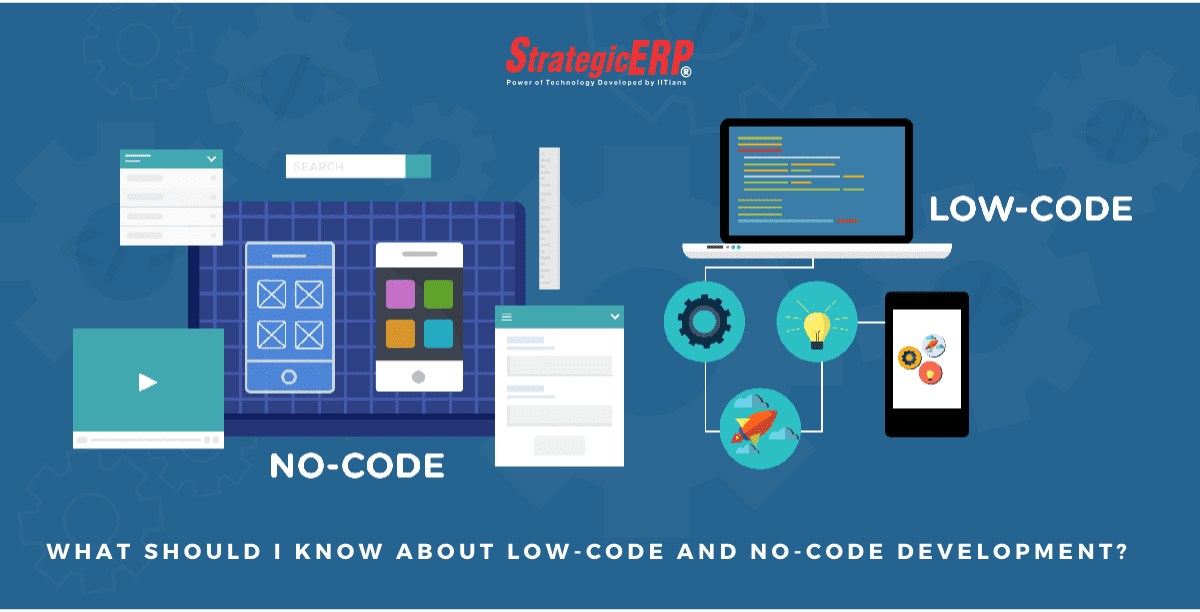What should I know about low-code and no-code development?
Category :
Blog posted by : Admin / 20 Oct, 2020
Digital Transformation is revolutionising the entire world, and its impact on the business world is phenomenal. It's not only the changing nature of the business world that makes it imperative for businesses to embrace digital transformation, but also the expectations of customers as well as employees.
Customers are becoming more and more used to the new way of the world. Customers are no longer consuming content, products, and services the way they used to. As the business world is transforming, so is the way that customers interact with businesses, make decisions, buy, and consume. Customers are no longer satisfied with the old way of doing business, they are experiencing the digital way of business and they expect it from every business. And unless businesses do this, they will have no chance of bringing in or retaining customers.
Employees too, are being exposed to the digital way of things, and are becoming more and more accustomed to it. Employee satisfaction is not just about fiscal remuneration. A huge aspect of employee satisfaction is the experience. The ancient, outdated way of doing business will serve as a constant annoyance that gets in the way of work. Whereas, a smoother and better experience goes a long way in employee satisfaction.
Businesses are realising this need to shift and are working towards becoming more agile and efficient. A huge part of this is low-code/no-code platforms. Custom software that offer flexibility, agility, and high-level customisation are necessary in order to stay at the top of the game. Developing mobile app solutions and custom software is becoming more and more crucial for moving ahead with the times. But the resources required for developing such solutions in-house are tremendous, and most businesses do not possess such resources and capabilities. The planning and development of such solutions differ greatly from what is required for traditional solutions. Low-code/no-code platforms are the perfect solutions to this pickle.
Let us take a look at what exactly we are dealing with:
Low-code development
For a layman to understand this concept we can compare low-code development to a vehicle manufacturing assembly line. The point of a manufacturing assembly line is to create a better, perhaps easier way of doing things that are complex and time-consuming. Tasks that are tiresome and laborious are automated and time-consuming functions are streamlined with a more efficient, simpler, and easier process.
With a visual IDE (integrated development environment) that allows users to easily develop a UI (user interface), application data models, etc. without much knowledge of coding. This platform also allows users to add to it by writing code manually if they so choose to. It also has ALM (Application Lifecycle Management) tools that enable users to develop software, while also empowering them to debug, deploy, and maintain them through various stages such as testing, staging, and production.
Low-code software development can be viewed as a shortcut or a cheat code that helps users to fast-track software development with easier and simpler building blocks. It essentially creates an environment where half the work is already done, and the users only need to put together the component of their choice, according to their liking to create the final painting they desire. It requires very little or rudimentary coding knowledge to develop applications with low-code development.
No-code development
No-code development expects zero knowledge of coding from the user. The customisation and enhancement that low-code development offers with the ability to add to the source code cannot be found in no-code development. No-code development is even simpler.
No-code development offers a set of tools to create applications in an easy visual interface with a drag-and-drop setup for developing everything including a UI, data management functionalities, integration, and logic. It can be thought of as a shopping cart where you pick and choose the components you want, and the system creates a product with all the specifications and features you asked for.
Users only need to convey to the system their requirements and the UI they desire. And the system will create the final output. In contrast to traditional software application systems where users define instructions to the system for how to design the application; with no-code development, the users only define what to do, and the system does it for the users.
This revolutionary leap in software development does not only save time but maximises innovation by empowering even those with little or no coding knowledge to develop applications. Different teams that do not possess any coding knowledge can develop for themselves any kind of system they want without the help of developers. For example, the Finance team could create any auxiliary software they want and experiment around for improving their operations or increasing efficiency. Dashboarding and reporting functions can be enhanced by customisations that users can define.
This technology is certainly a game-changer that businesses need to study and start taking advantage of if they desire to keep up with the competition. In our next blog, we will talk in details about the benefits that low-code and no-code development offers.







